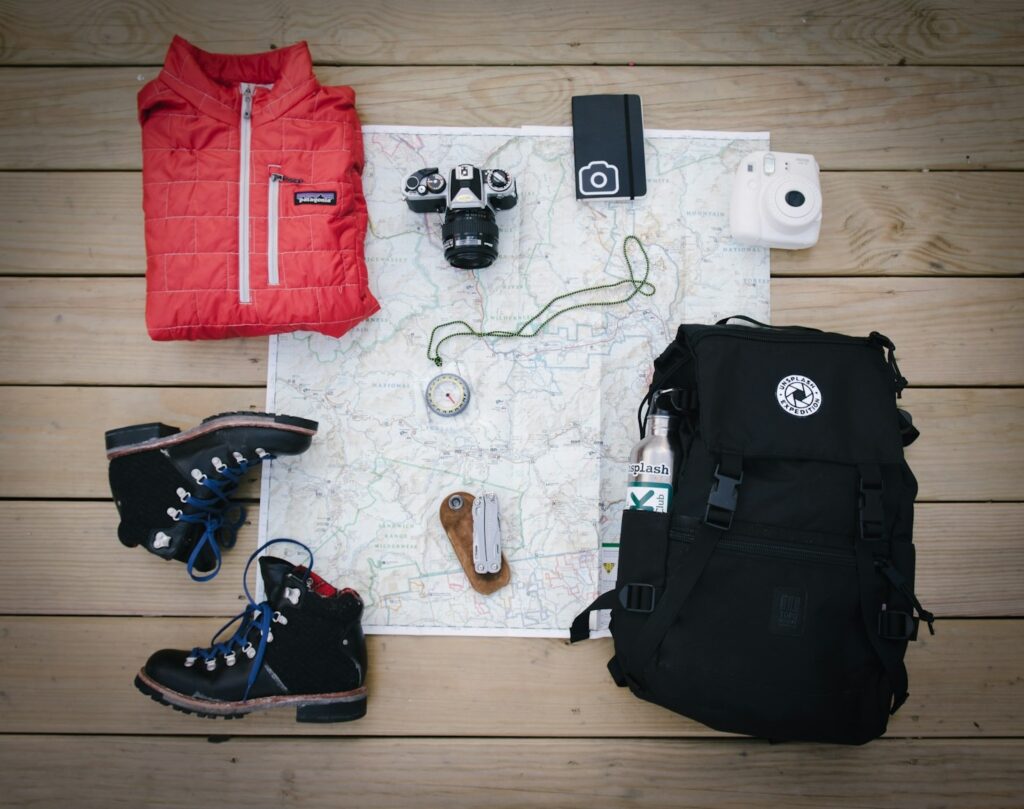Planning a hike or multi-day trail adventure? Whether you’re a beginner or a seasoned explorer, having the right gear can make all the difference between a successful trek and a miserable one. That’s why we’ve compiled this ultimate trail gear checklist—to help you stay prepared, safe, and comfortable every step of the way.
Let’s break it down into must-have categories to make packing easier and smarter.
🎒 Essentials: What You Should Never Leave Behind
These items are the core of any hiking or camping trip. Forgetting just one could put your trip (and safety) at risk.
- ✅ Backpack – Choose a daypack or full-frame pack depending on trip length.
- ✅ Navigation tools – Topographic map, compass, and GPS device or smartphone app with offline maps.
- ✅ Hydration – Water bottles or a hydration bladder, plus a water filter or purification tablets.
- ✅ Food and snacks – High-energy items like trail mix, jerky, granola bars, and freeze-dried meals.
- ✅ Multi-tool or knife – Useful for gear repairs, food prep, or emergencies.
- ✅ Headlamp or flashlight – Always bring extra batteries.
Pro Tip: Always pack a little more food and water than you think you’ll need—especially for longer hikes.
🧥 Clothing: Dress in Layers, Plan for the Unexpected
Weather in the wild can shift fast. That’s why layered clothing is crucial for staying dry and warm.
- ✅ Moisture-wicking base layers (top and bottom)
- ✅ Insulated jacket (down or synthetic)
- ✅ Rain jacket and rain pants (waterproof and breathable)
- ✅ Trekking pants or shorts
- ✅ Wool or synthetic socks (bring an extra pair!)
- ✅ Hat and gloves (even in summer, mountain temps can drop)
- ✅ Trail runners or hiking boots (well broken-in and weather-appropriate)
Don’t Forget: Cotton kills on the trail. Stick to wool or synthetic fabrics to stay warm when wet.
🏕️ Shelter & Sleep System: For Overnight Adventures
If your trek includes camping, you’ll need the right gear to sleep safely and comfortably.
- ✅ Tent, tarp, or bivy sack
- ✅ Sleeping bag (rated for expected temperatures)
- ✅ Sleeping pad or inflatable mat
- ✅ Ground tarp or footprint
- ✅ Pillow or stuff sack filled with clothes
Optional but Handy: Eye mask and earplugs if you’re a light sleeper.
🔥 Cooking & Food Prep: Fueling Your Adventure
Even on short trips, having a way to boil water or cook is a game-changer.
- ✅ Backpacking stove + fuel
- ✅ Lighter, waterproof matches, or fire starter
- ✅ Cooking pot and utensils
- ✅ Biodegradable soap and scrub pad
- ✅ Collapsible bowl or mug
- ✅ Bear bag or bear canister (if in bear country)
Helpful Tip: Always store food at least 200 feet away from camp and hang it when needed.
🧰 Safety & First Aid: Prepare for the Unexpected
Accidents and surprises happen. Having these items could save your trip—or your life.
- ✅ First aid kit (with blister care, gauze, meds)
- ✅ Whistle for signaling
- ✅ Sunscreen and lip balm
- ✅ Insect repellent
- ✅ Emergency blanket or bivvy
- ✅ Personal locator beacon (PLB) or satellite communicator for remote treks
Bonus: Make a habit of checking your kit before each trip and replacing expired items.
🧼 Hygiene & Extras: Stay Comfortable Out There
Just because you’re roughing it doesn’t mean you need to feel gross.
- ✅ Toilet paper or wipes
- ✅ Trowel for digging cat holes
- ✅ Hand sanitizer
- ✅ Quick-dry towel
- ✅ Toothbrush and toothpaste
- ✅ Trash bag (Leave No Trace!)
🎯 Final Thoughts
No matter your skill level, the best way to ensure a great outdoor experience is to pack smart. Use this checklist as your go-to guide every time you hit the trail. Not only will you feel more confident and organized, but you’ll also reduce risk and boost your enjoyment in nature.
Before your next trip, review your gear, check the weather, and always tell someone your itinerary. With the right preparation, the trail becomes your playground—not your problem. If you need a checklist, go HERE.
One last thought. Personally, I like to travel light when I hit the trail. We cover how to pack light on the camping trail here at Trail Ger HQ. Just click on the underlined text in this paragraph.
